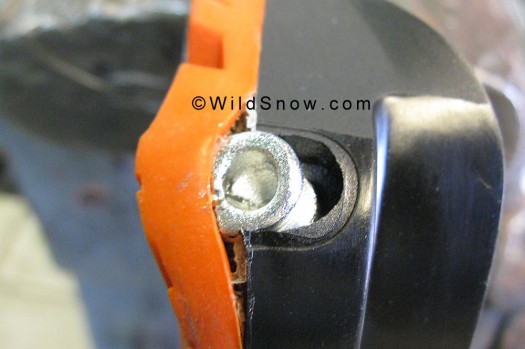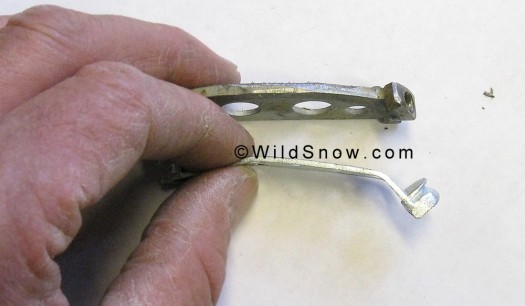Note: This post is left published for historical continuity. As of circa 2014 all Solomon boot tech fittings are improved and fine.
We’ll, I was hoping this would turn out better. But it looks like I’ll never get Solomon as an advertiser, and I’ll probably have to buy my review boots from now on. But my focus is on you guys, the readers backcountry skiers who I write for and who I thank so much for visiting here. Backstory: A few days ago it was reported that a man had taken a severe fall due to the tech fittings failing in his Salomon Quest ski boots. Knowing how strong tech fittings are (I’d never heard of any ripping out of a boot), I was skeptical at first. But I heard from the accident victim and his friends, and it sounded like their take was real. So I blogged from that POV, but hoped I’d be able to test the Salomon fittings myself. Thanks to our guest blogger Jonathan Shefftz, who found an online source, I bought some fittings a few days ago and had them Fedexed. Then they endured the WildSnow tear down. Here you go, a public service to save folks from injury if not death.

Ordered online via retail, the fittings came in prime time packaging. Elsewhere it's been said that any problems with the fittings were the result of pre-production samples being used. This doesn't look like a pre-production sample, and the fact that I could still buy them retail a few days ago is somewhat of a concern, as you'll see as you read on.
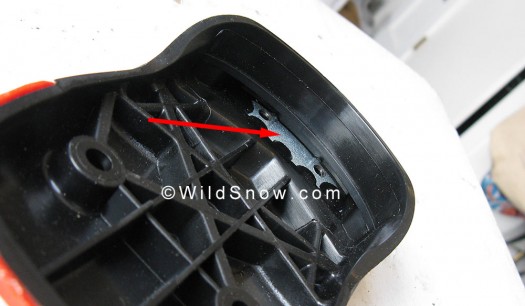
First glance doesn't reveal much, except that the toe fitting looks different than Dynafit OEM, though it appears to indeed be one piece of steel rather than tiny fittings molded into each side of the boot (as some folks suspected). During this exam, I was already pretty sure these fittings were not made by Dynafit (as most tech fittings still are), but rather were a poorly executed imitation.
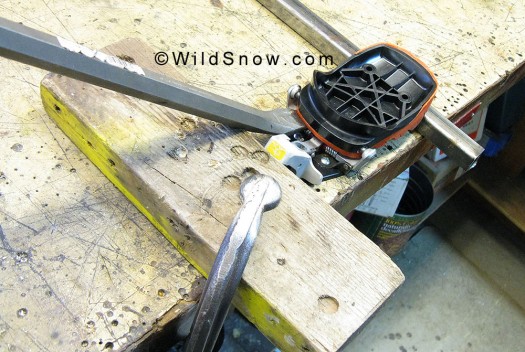
I began by locking the boot in a Dynafit binding, on a ski. But my test rig seemed to have potential for ski damage, so instead I screwed the binding to my workbench. I then simply inserted a 16 inch pry bar (otherwise known as an ANSI crowbar) under the boot toe using a chunk of wood as a fulcrum.
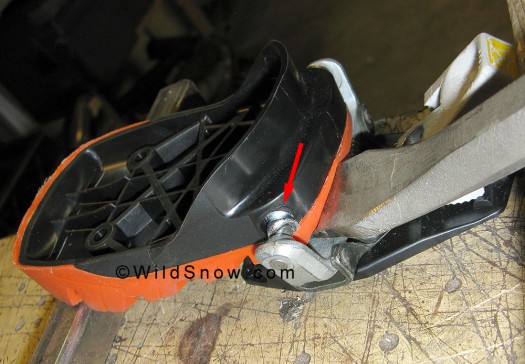
I applied a reasonable amount of force to the pry bar and boot, nothing extreme. The fitting almost immediately deformed and pulled part way out of the boot, then the boot ejected from the binding due to the fitting going out of alignment. In other words, a skier could easily do this by simply leaning back in a pair of ski boots. For comparison, I then placed a pair of Scarpa Spirit 3 boots in my test rig and applied the same force and more. With the Scarpas, there was no deflection of the fitting, they were totally solid. If I'd kept going with the Scarpas it was obvious I'd either damage the binding or rip it out of the workbench, so I didn't go farther.

By softening the plastic with a heat gun, I then removed the fitting from the boot. It's obvious that the failure was caused by the ends of the fitting bending as indicated by arrows.
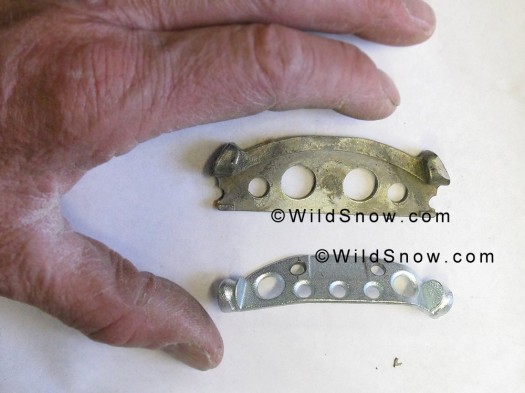
Tech fitting comparison, bent Salomon fitting at bottom, beefy Dynafit OEM fitting at top. Notice the location of the lightning holes, which in the Salomon fitting result in very little metal in a critical location.
In the first few moments of my testing it was obvious the Salomon fittings are too weak to function as tech fittings are supposed to. Where this is going I don’t know, but I’d most certainly call on Salomon to recall every last one of these sole blocks “pads” and any boots that include them. The sole blocks also came with the rear fittings of course, we’ve not tested or evaluated those yet and feel no urgency to do so, since the toe fittings are the proven issue. I made some video of the testing process, will try to YouTube that eventually.
Note: This post is left published for historical continuity. As of circa 2014 all Solomon boot tech fittings are improved and fine.
WildSnow.com publisher emeritus and founder Lou (Louis Dawson) has a 50+ years career in climbing, backcountry skiing and ski mountaineering. He was the first person in history to ski down all 54 Colorado 14,000-foot peaks, has authored numerous books about about backcountry skiing, and has skied from the summit of Denali in Alaska, North America’s highest mountain.

